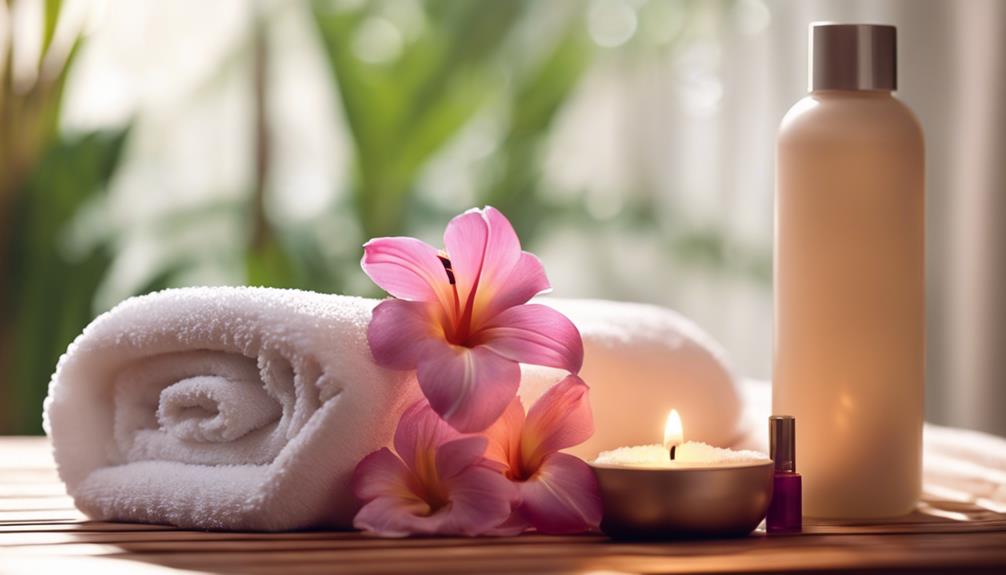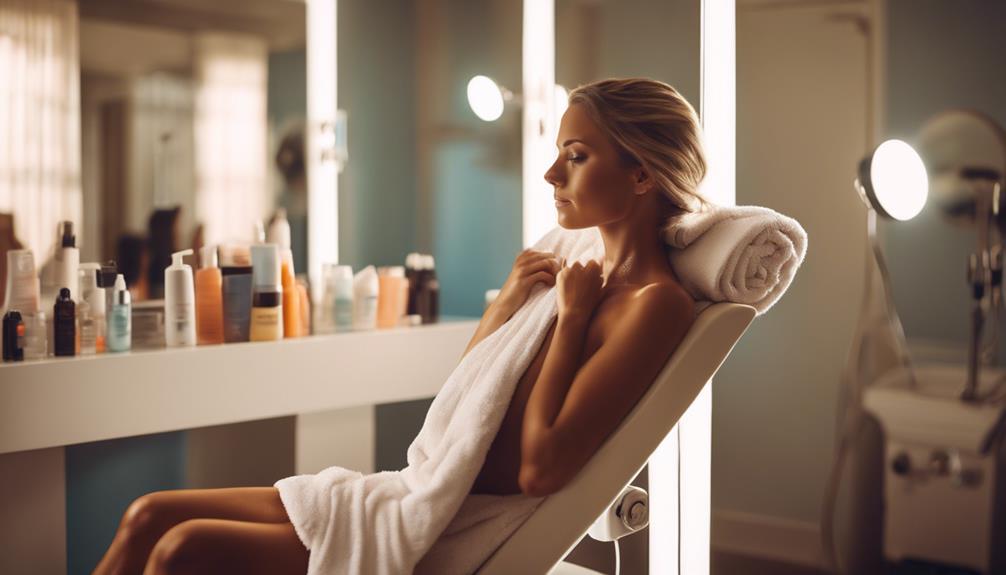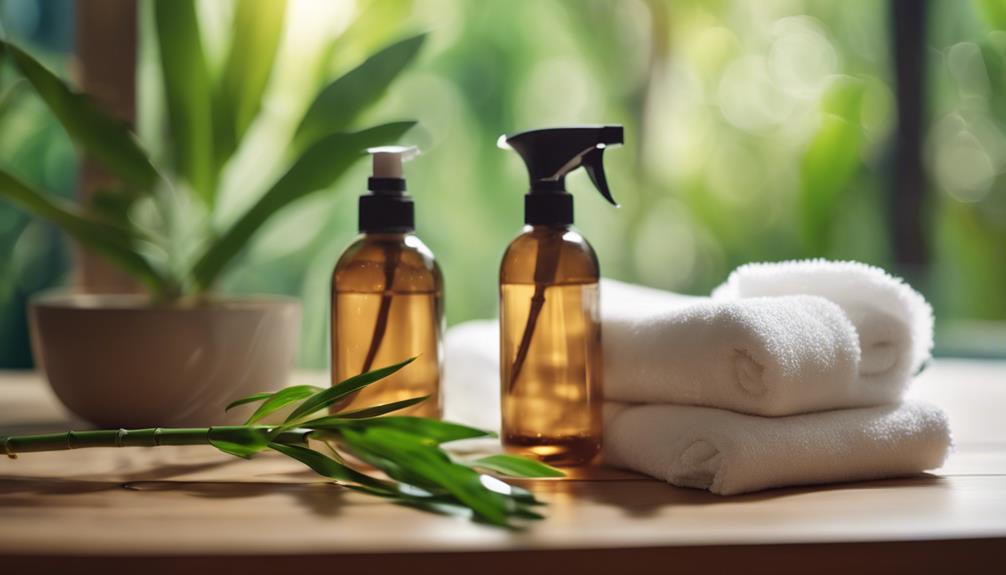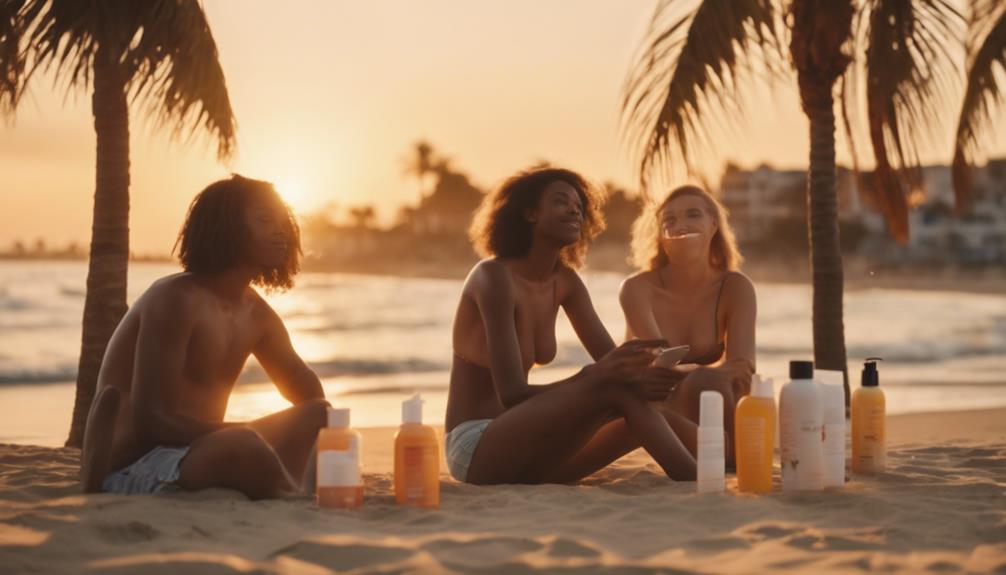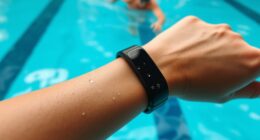Tanning bed safety starts with understanding your skin type and limits. For example, if you have Type 1 skin, limit sessions to 1-3 minutes, while Types 4 and 5 can handle up to 10 minutes. It is important to choose the appropriate bed level – Level 1 is recommended for beginners, while higher levels are suitable for more experienced tanners. Frequency of tanning sessions is also crucial; it is best to avoid daily sessions to prevent overexposure. Remember to always wear protective eyewear and stay hydrated while tanning. After tanning, apply a soothing lotion and avoid areas that may be sensitive. By following these precautions, you can enjoy a safer tanning experience. There is much more to explore on how to achieve that perfect glow!
Key Takeaways
- Understand your skin type to determine safe UV exposure limits and session frequency.
- Start with lower-level tanning beds to gauge your skin's response before progressing.
- Avoid exceeding recommended tanning session frequencies to reduce the risk of overexposure.
- Use protective eyewear during tanning sessions to safeguard your eyes from harmful rays.
Understanding Skin Types
When it comes to tanning, knowing your skin type is essential for safe and effective UV exposure. Your skin type, ranging from Type 1 to Type 5, determines how long you can safely spend under tanning lamps.
If you're Type 1, stick to 1-3 minutes; your skin burns easily. For Type 2, start with 2-4 minutes, while Type 3 can handle 4-8 minutes. If you're Type 4 or 5, you can tolerate 4-10 minutes without significant risk of burning.
Always treat your initial session as an introduction to tanning. Monitor your skin's response, and avoid daily visits to allow recovery time.
Following these guidelines helps you achieve a beautiful tan while minimizing the risk of damage.
Tanning Bed Levels
Tanning beds come in various levels, each offering different UV output that affects how quickly you can achieve a tan. Understanding these levels helps you choose the right one for your skin type and tanning goals.
Here's a quick breakdown:
- Level 1: Gentle UVA/UVB rays, perfect for beginners or those with fair skin.
- Level 2: A stronger mix of UV rays that accelerates tanning for those with some experience.
- Level 3: High intensity, suited for experienced tanners looking for deeper results.
Choosing the appropriate level is vital for your safety and tan quality. Always remember to start slow, especially if you're new to tanning beds, and monitor your skin's response throughout the process.
Frequency of Sessions
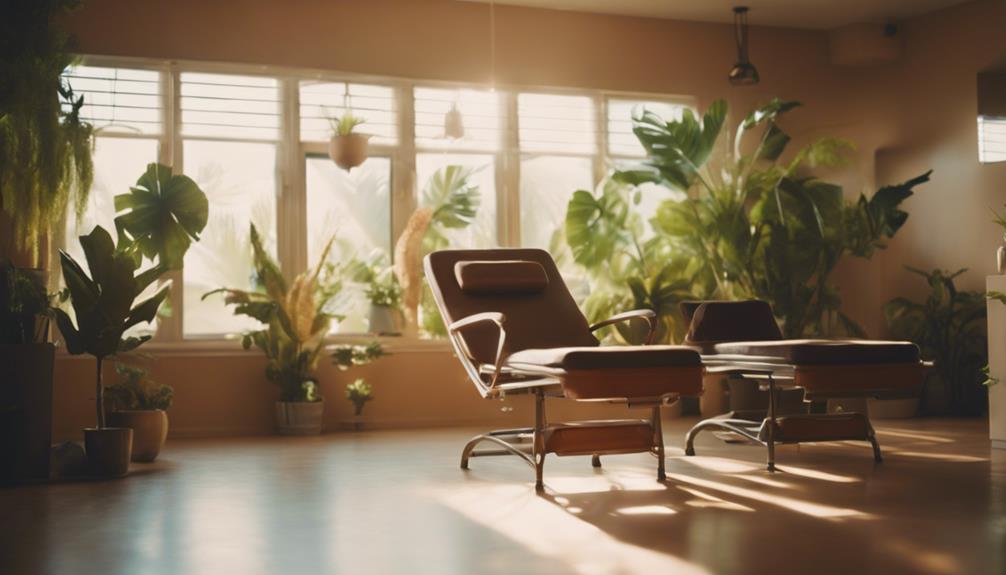
Understanding how often you should use tanning beds is essential for achieving a safe and effective tan. The frequency of your sessions largely depends on your skin type and the tanning bed level you choose. Generally, it's best to space your sessions to allow your skin to recover.
| Skin Type | Recommended Frequency |
|---|---|
| Type 1 & 2 | 1-2 times per week |
| Type 3 | 2-3 times per week |
| Type 4 & 5 | 3-4 times per week |
Avoid daily tanning to reduce the risk of overexposure. Always monitor how your skin reacts and adjust your frequency accordingly. Remember, a gradual approach is key to achieving that desired glow safely.
Essential Safety Precautions
Prioritizing safety is essential to enjoying your tanning bed experience without risking skin damage or health issues. To guarantee a safe and effective tanning session, follow these essential precautions:
- Know Your Skin Type: Understand where you stand on the Fitzpatrick Scale and determine a suitable start time for your tanning sessions.
- Stay Hydrated and Moisturized: Drink plenty of water before and after tanning, and apply a good moisturizer to keep your skin healthy and glowing.
- Seek Expert Guidance: Consult with salon professionals to tailor your tanning strategy based on your skin type and any specific concerns you may have.
Post-Tanning Care
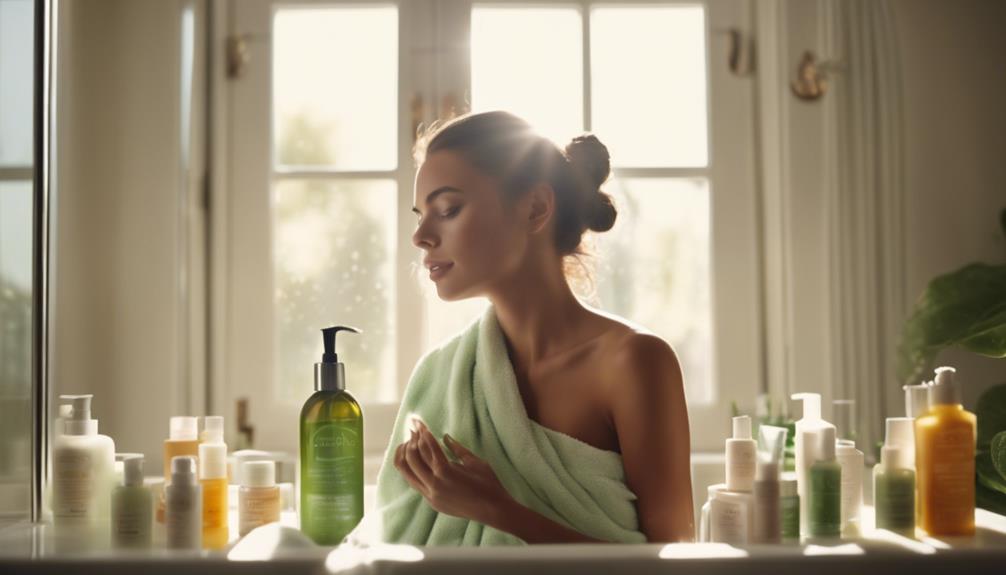
After your tanning session, applying a soothing lotion or aloe vera can help retain moisture and calm your skin. It's vital to hydrate with water to replenish your skin after UV exposure. Wearing loose, breathable fabrics allows your skin to recover comfortably. Exfoliating gently a few days post-tanning enhances your tan's appearance. Always use sunscreen before any outdoor activities to protect against harmful UV rays.
Here's a quick guide to post-tanning care:
| Care Tips | Purpose | Frequency |
|---|---|---|
| Apply lotion | Retain moisture | After each session |
| Hydrate | Replenish skin | Daily |
| Wear loose clothing | Allow skin to breathe | Post-tanning |
| Exfoliate gently | Enhance tan appearance | 2-3 days later |
| Use sunscreen | Protect skin outdoors | Before going outside |
Recognizing Overexposure Symptoms
Recognizing the signs of overexposure to tanning beds is essential for maintaining skin health and preventing long-term damage. If you notice any of the following symptoms, it's time to take a break and reassess your tanning routine:
- Skin Redness: This indicates irritation and a possible sunburn.
- Peeling Skin: If your skin starts to flake, it's a sign of damage.
- Dizziness or Discomfort: Feeling lightheaded or uncomfortable means you've likely overdone it.
Pay attention to these warning signs, as ignoring them can lead to serious skin issues.
Always prioritize your skin's health over achieving a quick tan, and consider adjusting your tanning sessions accordingly.
Trending Tanning Topics

Staying informed about trending tanning topics can help you make safer choices and enhance your tanning experience, especially after noticing signs of overexposure.
Right now, discussions are buzzing around the best tanning bed face covers, essential for protecting your skin.
Pre-tanning skin preparation tips are gaining traction, emphasizing the importance of exfoliation and hydration for an even tan.
Additionally, eye protection, like proper goggles, is often highlighted to prevent damage.
Many are also exploring healthy tanning alternatives, such as sunless tanners, to achieve a glow without the risks.
Remember, limiting session frequency and respecting your skin's limits are vital.
Staying updated on these trends will help you tan safely while enjoying your desired look.
Frequently Asked Questions
Can I Use Tanning Beds if I Have Sensitive Skin?
If you've got sensitive skin, you can try tanning beds, but start with the lowest level and limit your sessions. Monitor your skin's reaction closely and consider alternatives for safer tanning options.
How Can I Tell if a Tanning Bed Is Clean?
To tell if a tanning bed's clean, check for visible dirt or residue. Confirm staff regularly sanitizes the surface, and ask about their cleaning protocols. A clean bed helps protect your skin during tanning sessions.
Are There Any Age Restrictions for Using Tanning Beds?
You won't believe it, but there are age restrictions for tanning beds! Most places require users to be at least 18 years old. It's essential to check local regulations to guarantee you're following the rules.
What Should I Wear During a Tanning Session?
During a tanning session, you should wear minimal clothing to achieve an even tan, but consider protective items like goggles for your eyes. Also, apply a suitable sunscreen to safeguard your skin from UV exposure.
Is It Safe to Tan While Pregnant?
"Better safe than sorry!" While it's generally advised to avoid tanning during pregnancy due to skin sensitivity and potential risks, consult your doctor for personalized guidance. Your health and your baby's well-being should come first.
What Are the Limits and Essentials for Tanning Bed Safety?
When using tanning beds, it’s crucial to know the tanning bed safety essentials. Limit your tanning sessions to avoid overexposure to harmful UV rays. Always wear protective eyewear and use the recommended lotions to protect your skin. Following these essentials will help ensure a safe tanning experience.
What Are the Limits for Safe Tanning Bed Use?
When it comes to tanning bed risks and tips, it’s important to know the limits for safe tanning bed use. Experts recommend limiting sessions to no more than one per week to reduce the risk of skin damage and premature aging. It’s also crucial to always wear protective eyewear and moisturize after tanning.
Conclusion
As you step out of the tanning bed, feel the warmth of that sun-kissed glow enveloping you like a soft summer breeze.
By knowing your limits and following safety precautions, you're not just enhancing your skin; you're embracing a radiant confidence.
Picture yourself basking in the sun, proud of your healthy, golden hue.
With mindful care and attention, you can enjoy every moment of your tanning journey while keeping your skin safe and beautiful.


